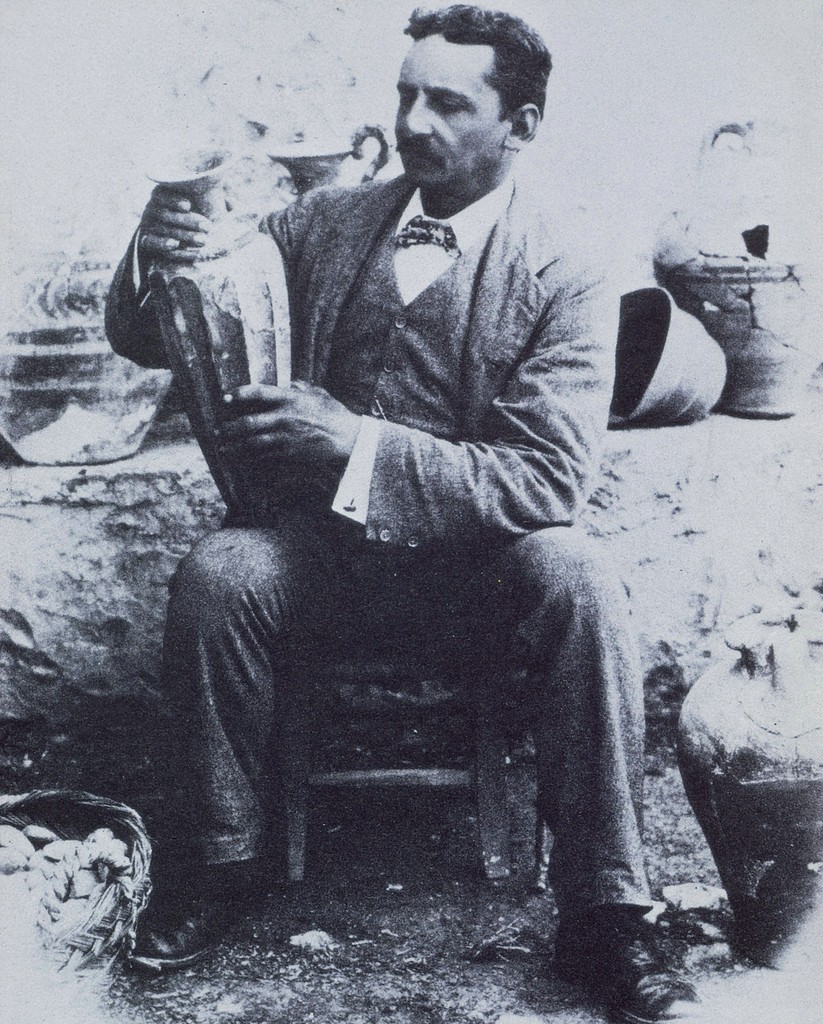
The work of British archaeologist Sir Arthur Evans (pictured Image 1) at Knossos changed the course of Greek art history, and the slides from the Hugh Sackett Collection help viewers envisage and understand the enormity of Evans's work. Evans unearthed and helped reconstitute the famed Palace of Knossos, one of the best-known works of architecture from the Bronze Age. His work enhanced viewers' engagement with ancient architecture and allowed them to visualize and engage with antiquity. Despite the magnitude of Evans's work, it has often been the subject of criticism, with many criticizing his reconstruction method and fundamentally altering how people perceive antiquity. With visual aid from Hugh Sackett's slide collection, this exhibit explains Evans's work at Knossos, focusing on the unearthing of the Palace and why it is one of the most critical moments in ancient Greek art history.
Who was Arthur Evans?
Sir Arthur Evans was a British archaeologist who is considered one of the pioneers in the study of the Aegean civilization in the Bronze Age. Born July 11, 1941, in Hertfordshire, England, Evans always appreciated ancient ruins and believed that archaeology should check, supplement, and illustrate written history about them (K., 1918, and Evans, 1950). He traveled widely around Europe, with much of it concentrated in the Balkans.
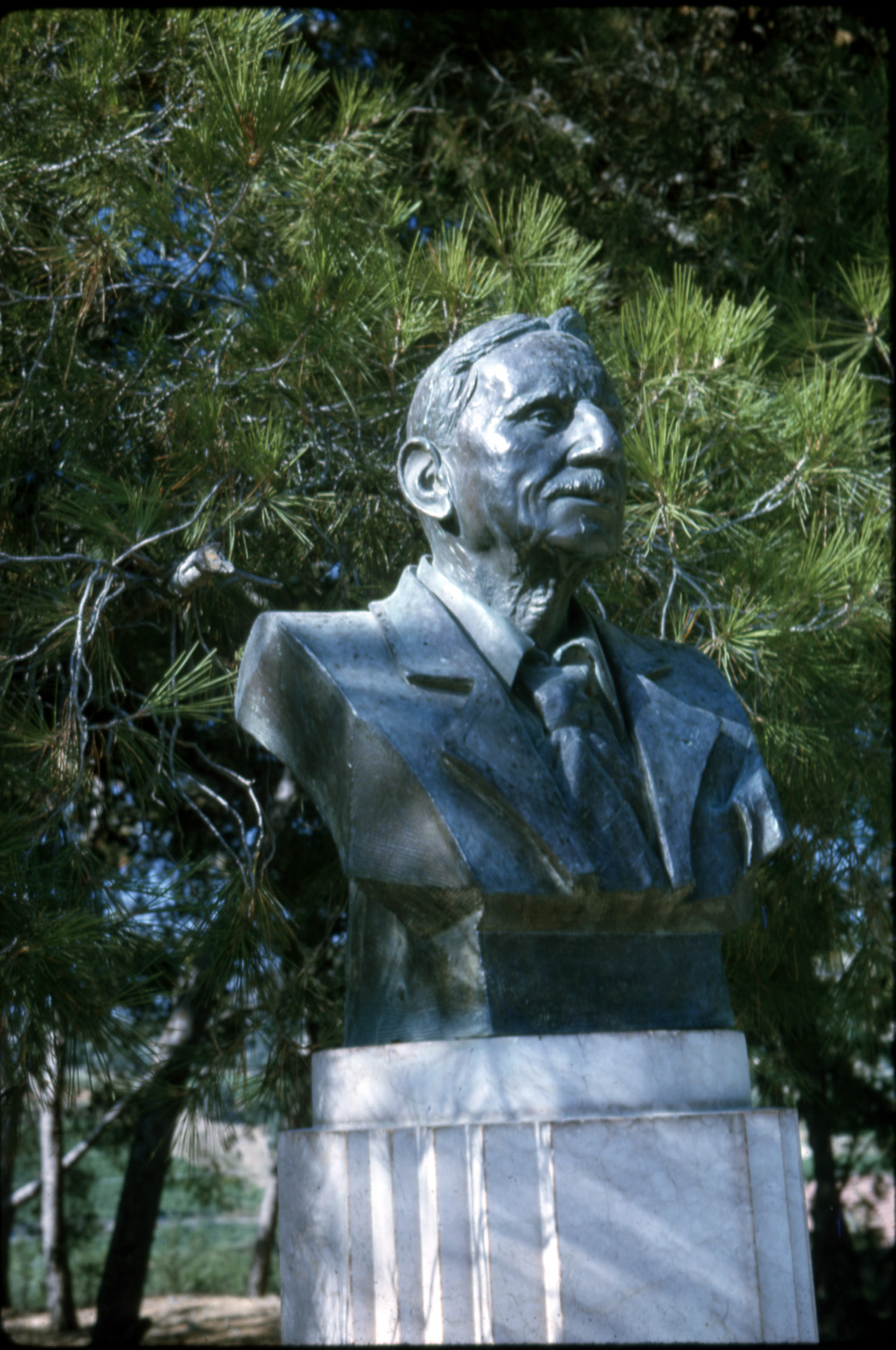
Evans was later appointed Keeper of the Ashmolean Museum at Oxford, and his fascination with Crete bloomed during this period. In the spring of 1894, he moved to Crete, researching alongside Duncan Mackenzie and Theodore Fyfe for several years (Evans, 1950). Together, they began unearthing the signs of a sophisticated ancient civilization, the pinnacle of which was the discovery of the Palace of Knossos in 1900. Evans was convinced that the island showed signs of an ancient civilization (Evans, 1950).
The best-known of Evans's projects is, of course, his discovery and unearthing of the Palace of Knossos. On March 23, 1900, he broke ground at Knossos. Over the next six years, Evans and his team uncovered the ancient Palace associated with King Minos. Along with the Palace, they also discovered a Minoan Road, dubbed the "Royal Road," a smaller royal villa, a tomb, and other civic buildings (Farnoux, 1996). Their discoveries also included important frescoes, which indicated what the original civilizations might have been like, ceramic artifacts, and other objects (Farnoux, 1996). Today, Arthur Evans is primarily associated with this aspect of his work on Crete because of the fame and enormity of the Palace of Knossos discovery.
The Legendary Palace
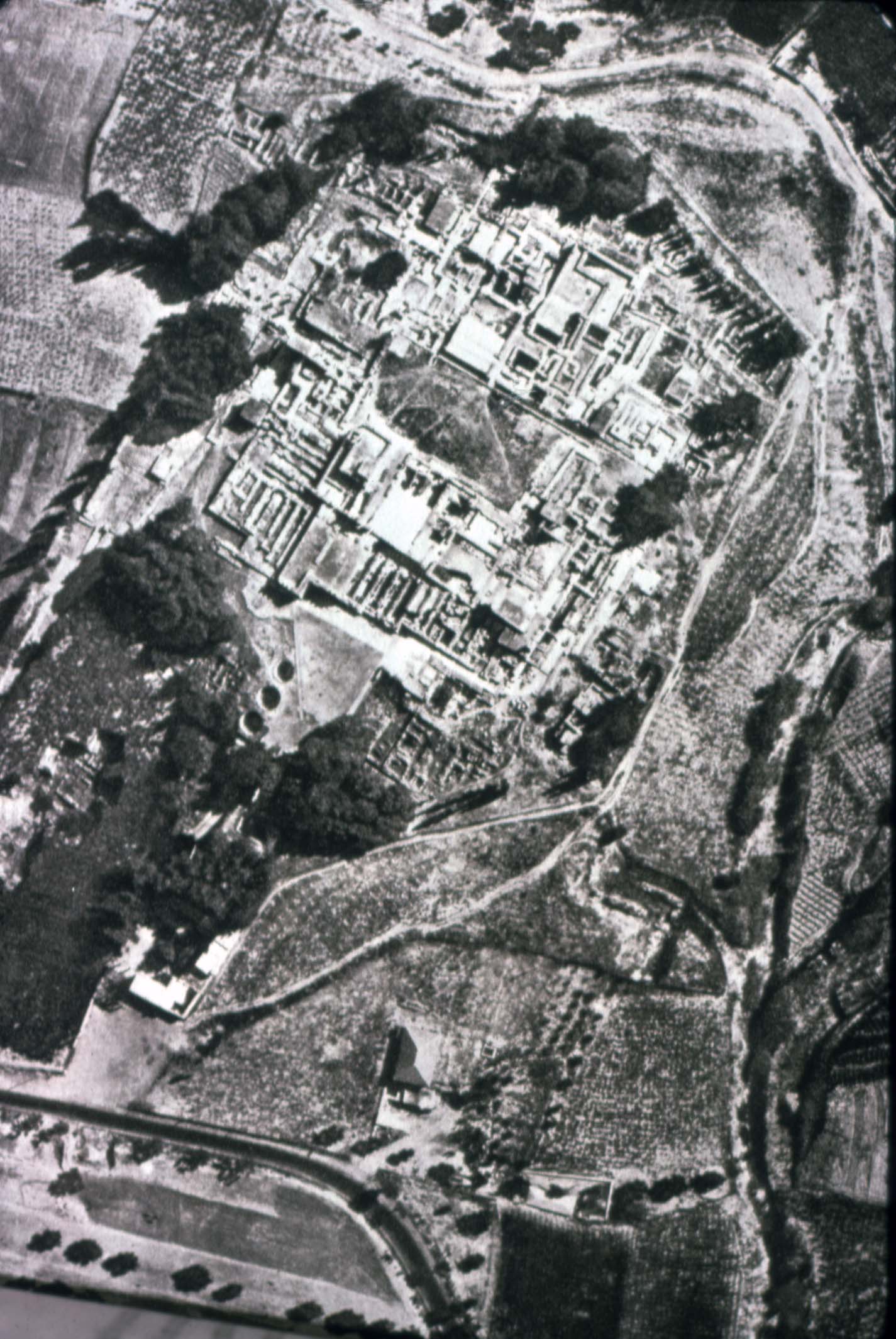
The Palace at Knossos was already a subject of legend, and Evans helped popularize it further.
The Importance of Evans's Work
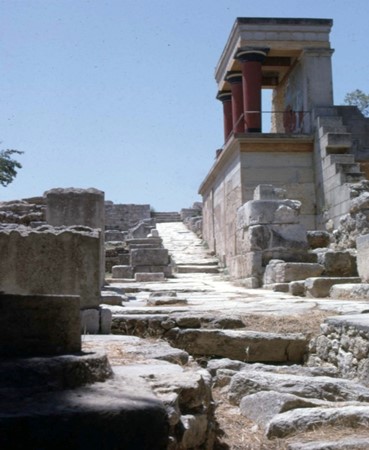
Arthur Evans's work in Knossos is archaeologically and socially vital, and a cornerstone of ancient Greek architectural study. Evans's unearthing of the Palace is significant in studying the Minoan civilization because it gives art historians and enthusiasts a visual tool to base their assumptions of the ancient world off. More than just unearthing, Evans helped conserve and reconstruct the Palace at Knossos with the help of a team of skilled architects. Evans and his team of architects could assess the "levels, ceiling heights, column sizes, stairways, floors, and a myriad of other details'' using fresco fragments as their guides (Warren, 2000). With this team, Evans was able to present a partial reconstruction of the legendary palace (Pictured Images 4 and 6), providing viewers with a visual reconstructive experience that allows them to engage with a partial but relatively accurate version of spaces such as the Throne Room (Pictured Image 5).
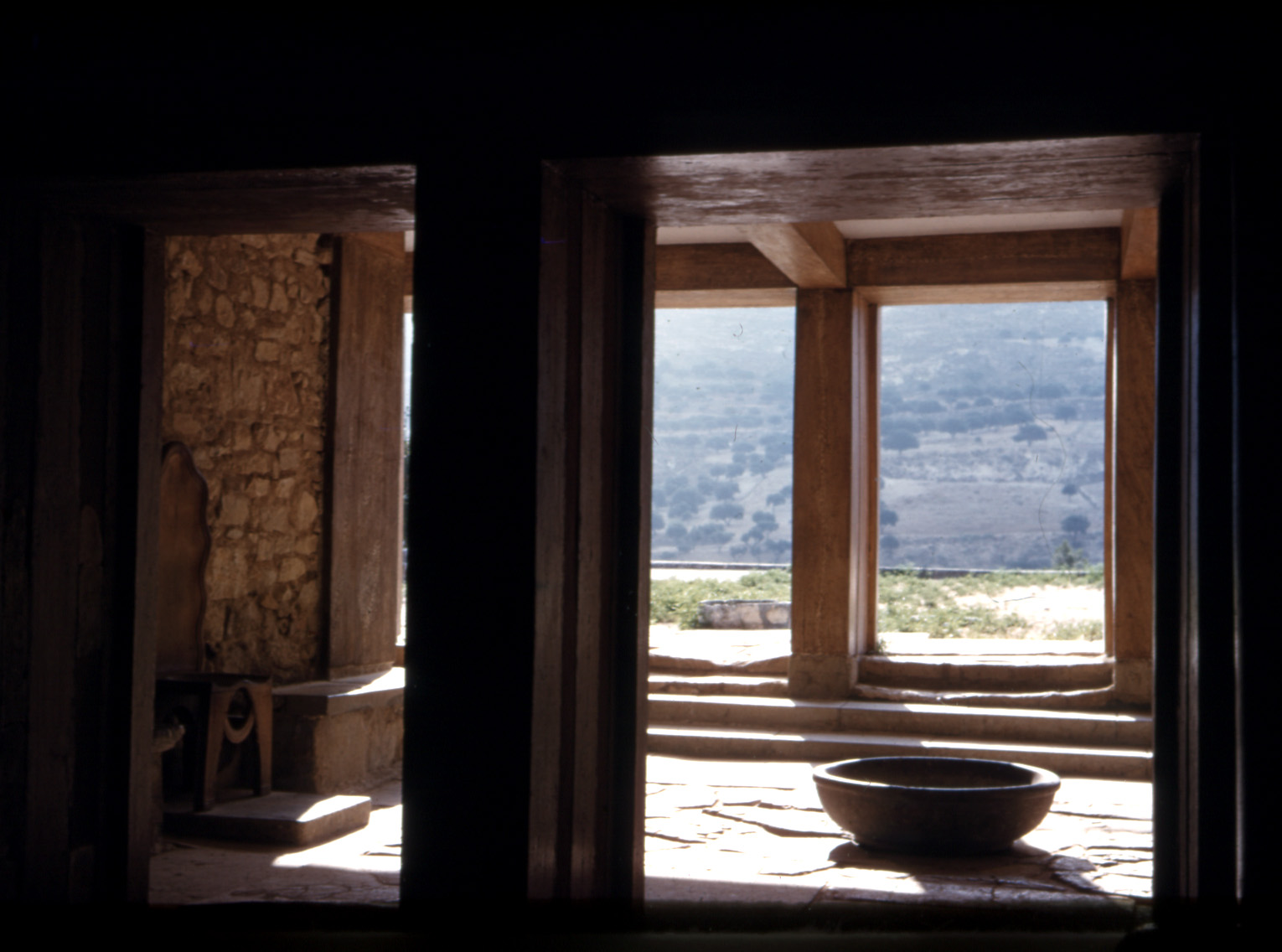
This reconstruction is vital to the viewer’s perception of antiquity (D'Agata, 2010). It provides a visual element to the scholarly explorations of the era, making it a lot more accessible for future generations of art historians to study them. Furthermore, some scholars have suggested that the discovery enabled Europe to "root its cultural identity in the great reservoir of the classical tradition" (D'Agata, 2010). This identity is the foundation of the Western civilization, and Western art as we know it today. Thus, Evans’s work is fundamentally attached to western culture and its relation to antiquity. However, the importance attached to it does not mean that it is not the subject of criticism.
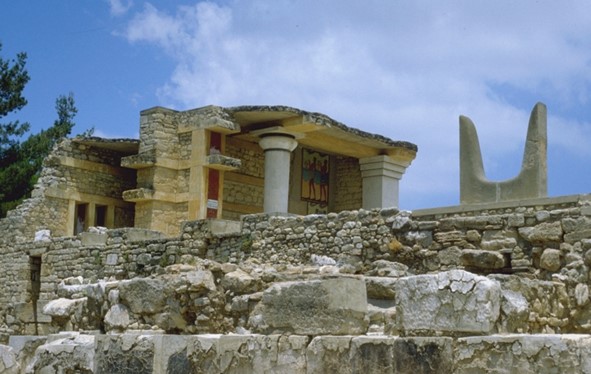
Evans's work with the Palace of Knossos has been criticized in retrospect. Critics point out that the Palace is both a monument of the Minoan civilization and Evans's conception of it. Alexandra Karetsou argues that the Palace of Knossos is a "borderline case between restorative and exploitative management of an archaeological site" (Karetsou, 2004). Critics like Karetsou feel that Evans's reconstruction project was carried out without a good sense of the nature of the original Palace, thus "altering the character of the ruins and bringing about its disunity" (Karetsou, 2004). They say that Evans imposed his ideas of the ancient civilization without delving deeper to gain further context. While this criticism might have some merit, Evans' work remains critical to studying Bronze Age architecture because of its unprecedented nature, and the Palace remains essential in popularizing mass interest globally in ancient ruins.
The importance of Arthur Evans's work cannot be overstated. As the images in this exhibit illustrate, this uncovering of the incredible Palace at Knossos and the civilization surrounding it was made possible because of Evans's fascination with and commitment to Crete. It has fundamentally changed how viewers engage with ancient architecture and think of antiquity, cementing Evans’s work at a prime position in Greek art history.
Jayabrato Chatterjee '23